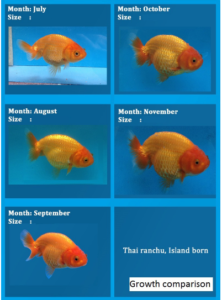Thanks to developments in technology, many things have changed. Before, taking pictures using film was a painstaking process, and consumed much time and money. Each shot cost you one part of a limited roll of film. There was no preview mode, and we had no choice but to develop all pictures, including the bad ones. Shooting an entire roll of film did not even guarantee we would get a single shot we liked.

When digital cameras arrived, everything became easier—much more so when smartphone cameras were introduced and improved, with applications for giving us quality pictures. The ease of using a digital camera and the popularity of social media created more reasons for pet hobbyists to take pictures.
For my part, I took up a photography course, read books, and did research on the Internet to enhance my knowledge. For me, here are the reasons hobbyists take picture of their pets:
• To share moments with their pets
• To create personal collections for memories
• To serve as a journal for projects such as breeding, grooming, and growth history
• To showcase of their accomplishments like competition awards
• To help sell their pets I will share my experiences and learnings with basic fish photography.

Fish are more difficult to take pictures of than other pets because of factors such as water refraction, glass reflection, and fish movements. But there are ways around this. Advanced photography techniques use DLSR cameras to control shutter speed, aperture, and light exposure. Additional lens filters minimize glare. Smartphones can also produce great pictures. Use a smartphone whose camera has a minimum of 6 megapixels. This will give you room to edit your photos if needed while still letting you take quality photos. Good natural light will compensate for the absence of shutter speed control in a smartphone. To minimize glare, change the angle of your camera. The selection of background is crucial to show the color of the fish.
To Photoshop or Not?
In my experience, these are my reasons for when Photoshop or some other editing tool can be of good use:
• Cropping
Transfer a major image to another image
Minimize background in order to place focus on the main subject
Replacing a background
• Annotations
To create a storyline
To make a selling template
To add a description of the subject
• Enhancing low quality photos
Brighten low light photos
Sharpen blurry pictures
Darkening photos that are too bright
• Combining 2 pictures
Growth measurement history
Grooming comparisons
Make Your Own Photo Tank
Here, I created a handy photo tank. It:

• Has interchangeable backgrounds
• Fits fish with a maximum size of 6
inches
• Is lightweight for mobility
• Has 2 levels of width preferences

You can create your own photo tank by using a standard 2 ½ or 5 gallon tank. For a background, use plastic table sheets with different colors; these are available at any local marketplace. You can also paint wood or galvanized sheets. Place the backgrounds outside the tank.

Fish photography is a great way to enjoy our pets because of the memories it gives are larger than life!
This appeared in Animal Scene’s February 2016 issue.






